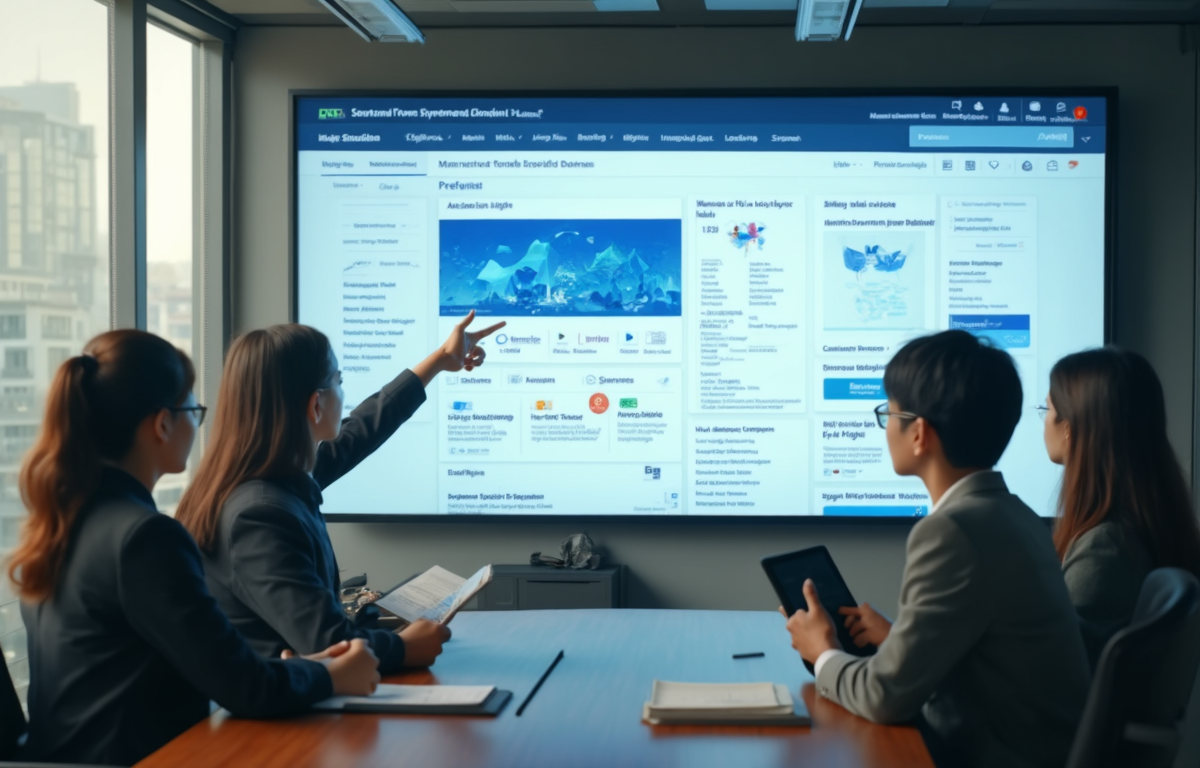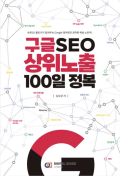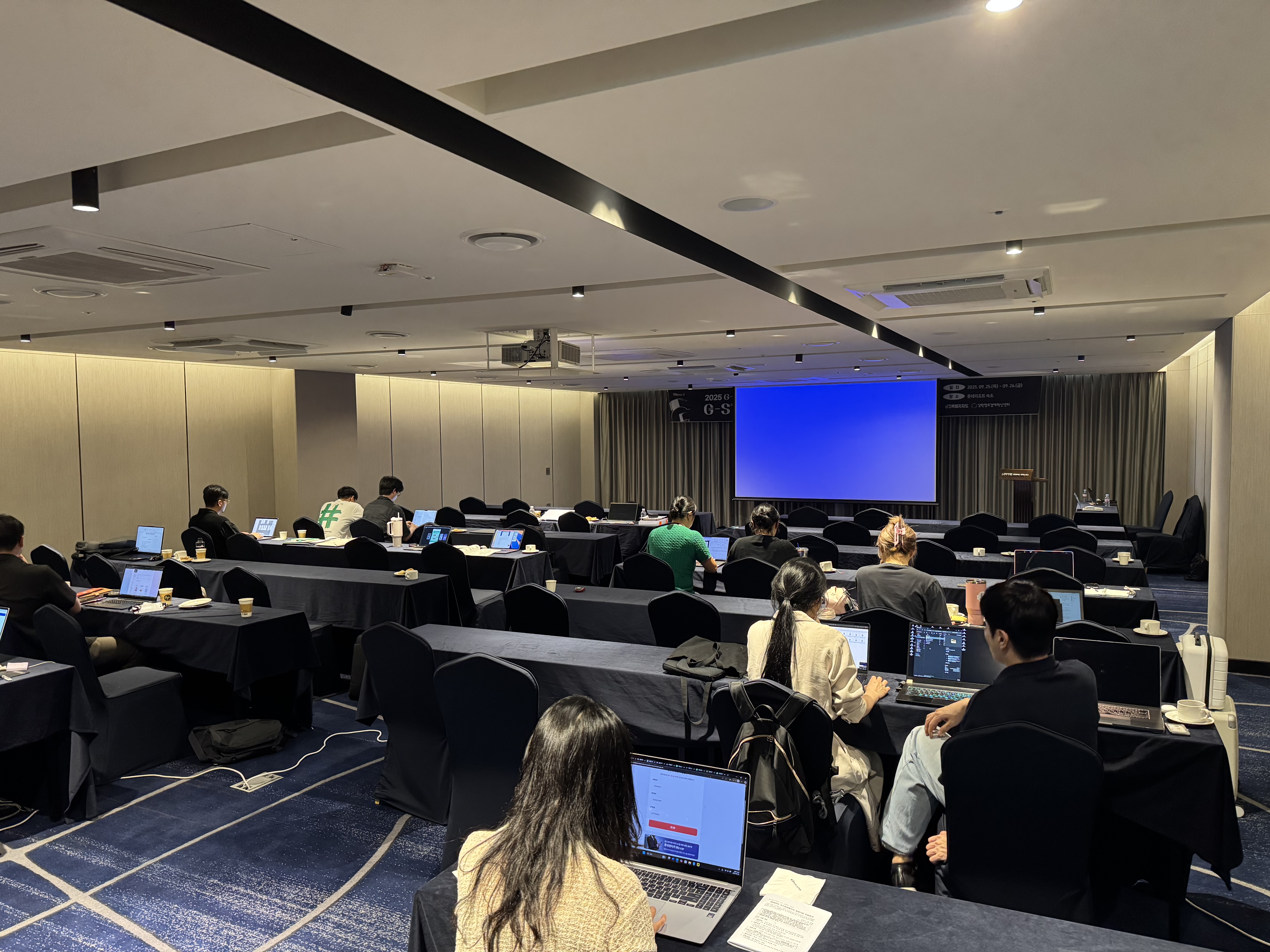Navigating Naver’s PPC landscape can be daunting, especially for marketing professionals eager to tap into South Korea’s vibrant market. Understanding its unique dynamics and language can seem like a major obstacle. But imagine the confidence of seamlessly launching campaigns on South Korea’s leading search engine and reaching a wider audience. Discover how this guide can transform your approach, offering you the clarity and strategies needed to conquer these challenges and ensure your advertising efforts thrive.
Understanding the Basics of Naver PPC Advertising

Naver PPC is a paid search ads system built into South Korea’s largest search engine, Naver.
In the Korean digital advertising landscape, mastering Naver PPC is critical—Naver holds between 22% to 68% of the domestic search engine market, depending on the metrics source.
This makes it more than just supplementary; it’s strategically essential.
Why does this matter for marketers? Because that dominance translates directly into high ad inventory traffic.
Over 54% of Naver’s total revenue actually comes from its PPC service, underscoring the platform’s deep integration with commerce and conversion within Korean internet life.
Unlike Google or Bing which focus primarily on websites and paid placements in a clean interface, Naver’s SERP (search engine results page) layout is quite different.
It’s divided into structured content zones: there are search ads marked with “광고,” followed by blog entries from Naver Blog, Q&A threads from Knowledge iN, and user-generated content through Café communities.
That means your ad isn’t just fighting other ads — it’s competing with organic content written by real users.
Strategically, this forces advertisers to be more localised and format-aware.
Simply having a landing page in Korean isn’t enough — your content must blend into trust-heavy environments like blog or café placements to maintain click-through rates.
To succeed in Naver search engine marketing, you need to understand how bids work (pre-paid in KRW only), how keyword match types are set up (which differ slightly from Google), and how ad rotation within content blocks affects visibility.
Familiarity here leads not just to impressions but actual business results.
In short: if South Korea is your market, Naver PPC should be your first priority — not an afterthought.
How to Set Up a Naver PPC Account and Campaign

To run a Naver PPC campaign, the first step is creating a Naver Ads account — and it’s not something you can just casually sign up for.
You must have a South Korean business license to open an account.
If you don’t, your next best option is working with a certified Korean digital agency that can register and manage the account on your behalf.
Without this step, you can’t proceed further since account verification is mandatory.
The entire platform, including the dashboard and all campaign management functions, is 100% in Korean.
That means if you’re not fluent or don’t have someone on your team who reads Korean comfortably, using the system effectively will be tricky — especially when setting targeting options or managing keyword research.
Once you’re in, decide on your ad campaign objectives.
Are you focusing on visibility or conversions?
This determines which ad format suits your goal best:
- Search Ads (Power Link): Appear above organic results — great for direct lead gen.
- Display Ads: Banner-style visuals shown across Naver’s partner networks.
- Brand Search Ads: Branded takeover of the search page — excellent for awareness.
- Shopping Search Ads (비즈사이트): Great for e-commerce players.
- Content/Blog-based Ads (Power Content): Blends into native trust-driven results.
After selecting your campaign type, go into keyword research using the Naver Keyword Tool.
Unlike Google, you define match types like “exact match” or use keyword expansion features unique to Naver.
Naver operates on a pre-paid model in KRW only, so make sure to preload your budget through a Korean payment gateway.
Don’t forget to use smart bidding strategies — focus spend on high-intent keywords with competitive click volume instead of broad visibility plays.
With narrow but strategic targeting options (like time slots or device-based filters), even smaller budgets can perform well when aligned with local user behaviour.
Exploring Naver PPC Ad Formats and Placement Opportunities

Naver PPC offers a wide range of ad placements that cater to different marketing goals, from immediate conversions to long-term brand building.
Understanding these formats and their placements is essential to maximise search ad visibility and ROI.
Search Ads: Power Link & Click Choice
Search Ads are core components of Naver PPC.
They appear prominently at the top of Naver’s SERP, marked with a “광고” tag.
- Power Link ads are the most competitive and visible, occupying the first few slots above organic results. Ideal for direct response campaigns like lead generation or product pushes.
- Click Choice Ads appear slightly below Power Link but still within prime user attention zones. These balance cost and visibility well for smaller brands.
Display Ads
Display ads are visual banners shown across Naver’s extended network, including portals like Auction, G-market, and sports or news sections.
These don’t always appear on SERPs but excel in retargeting and brand recall.
Brand Search Ads
These dominate branded keyword searches by taking over an entire section of the SERP with your logo, links, and descriptions.
Perfect for awareness and credibility during seasonal or high-impact campaigns.
Shopping Ads (Biz Site)
These feature product listings directly in shopping-related queries.
Great for e-commerce stores looking to convert bottom-funnel customers who are ready to buy.
All formats support varying degrees of targeting — by device, time slot, region — and some allow limited use of ad extensions like sitelinks or callouts if managed via a certified agency.
| Ad Format | Placement | Best For |
|---|---|---|
| Search Ads | SERP Top Positions | Lead Generation |
| Power Link | Top of SERP | Max Visibility & Conversions |
| Click Choice | Beneath Power Link | Cost-Effective Reach |
| Display Ads | Naver Network & Partner Sites | Retargeting & Awareness |
| Brand Search | Search Result Takeover | Brand Awareness & Trust |
| Shopping Ads (Biz Site) | Naver Shopping Section | E-commerce Conversion |
Each format offers different levels of exposure, cost models, and conversion potential.
Choosing the right combination allows for a layered approach to Naver PPC success across the funnel.
Keyword Bidding Strategies for Naver PPC Success

On Naver PPC, keyword bidding revolves around accuracy, localisation, and cost efficiency — especially since average click costs in Korea are higher than on global ad networks.
The first thing to understand?
Naver uses a match type system similar to Google but with its own flavour.
You can do exact match targeting for pinpoint control or utilise keyword expansion, which fetches related terms automatically.
Exact match is ideal when you want tight ROI control.
Expansion works better when you’re targeting broad search intent.
How do you choose which keywords to bid on?
Use the Naver Keyword Tool — it provides detailed local search volume and keyword competitiveness scores.
For example, the term “중고차” (used car) might have thousands of searches but also stiff competition and high CPCs.
In contrast, “서울 강서구 중고차 딜러” (Used car dealer in Gangseo, Seoul) has lower volume but higher conversion potential due to intent.
Once you’ve chosen your terms, adjust your bids with smart bidding techniques, especially for mobile or high-converting time slots.
Use the bid simulator tool to project outcomes before committing spend.
This helps avoid burning through budget on over-competitive keywords with low return.
A mini-case: If you bid ₩2,000 on “운동화” (sneakers), a generic keyword with massive volume, you’ll get lots of impressions but a low CTR and expensive CPC — too broad.
However, bidding just ₩1,500 on “여름 경량 남자 운동화 추천” (summer lightweight men’s sneakers recommendation), a long-tail keyword, could yield 2x better conversion rates at half the competition.
5 Tips for Smarter Naver Keyword Bidding
- Start with exact match on long-tail Korean keywords
- Use the Naver Keyword Tool for local search behaviour data
- Test bids via simulator before increasing budget
- Prioritise time slots/devices based on past conversion data
- Avoid brand-bidding unless you’re running Brand Search Ads
These practices help keep your budget lean while boosting visibility where it counts most.
With smart bid adjustments and the right tools, even small advertisers can compete effectively in Naver PPC’s ecosystem.
Tracking Naver PPC Performance and Conversion Metrics
![]()
To measure the actual success of your Naver PPC campaigns, you need to rely on detailed ad performance analysis — not gut feelings.
First, set up conversion tracking.
You can either integrate a Naver Pixel on your site or use UTM-based analytics with tools like Google Analytics 4 or AceCounter.
Pixel integration is more direct and allows more granular data within Naver’s own dashboard.
UTM-based tracking works well if you’re managing multiple ad platforms in parallel.
Once tracking is active, the Naver Ads dashboard provides core performance metrics you should monitor daily:
- Impressions: How many people saw your ad
- Clicks: How many users clicked it
- CTR (Click-Through Rate): Clicks ÷ Impressions
- CPC (Cost Per Click): Average KRW per click
- Conversions (CVR): % of clicks that led to a goal
- ROAS (Return on Ad Spend): Revenue ÷ Ad Spend
Here’s what a basic campaign performance report could look like:
| Metric | Description |
|---|---|
| Impressions | Total views your ad received |
| Clicks | Number of times users clicked your ad |
| CTR | Click-through rate (Clicks ÷ Impressions) |
| CPC | Average cost per click in KRW |
| Conversions | Completed goals from clicks (like purchases or sign-ups) |
| ROAS | Revenue earned for each won spent on ads |
Naver generally yields higher reported conversion rates than Google within Korea, due to its local dominance and content-integrated ad placements.
But those metrics only matter if you’re digging into campaign reporting regularly and adjusting creatives or bids based on what’s working.
Track performance data weekly at minimum.
Use placement comparison to understand which content zones — like Power Link vs Blog Ads — actually convert better for your niche.
Small topic-level optimisations based on metric patterns can lead to noticeable ROAS improvements over time.
Naver PPC vs. Google Ads: Key Differences and Strategic Insights
Which PPC platform works best for Korea-bound marketing—Naver PPC or Google Ads?
Answer: If your target is South Korea, Naver PPC is more effective due to higher trust, better conversion rates, and deeper local content integration.
That said, each platform serves its purpose in different strategic planning contexts.
Let’s break it down:
Platform Interface & Usability
Naver PPC’s dashboard is entirely in Korean.
If your team isn’t fluent in the language or lacks local support, you’ll run into hurdles managing campaigns.
Google Ads, on the other hand, offers multilingual settings and a globally familiar interface — strongly favouring international PPC teams.
CPC vs ROI
Yes, click costs on Naver are generally higher.
For example, popular commercial keywords like “보험” (insurance) can exceed ₩3,000 per click.
But the advertising effectiveness tends to beat Google within Korea because users trust Naver’s ad-integrated environment — especially on its SERP blocks that mix ads with blogs and forums.
In contrast, Google Ads offers lower CPCs globally and better control for budget pacing across countries but lags behind in Korea due to lower user base penetration.
Targeting & Reach
Google Ads has broader international PPC appeal with precise geo-targeting across 200+ markets.
It’s ideal for global campaigns with Korean as one language subset.
Naver PPC excels in hyper-local targeting, including specific districts in Seoul or mobile-only audiences active during certain hours — exactly what you need when fighting for niche visibility in Korea.
| Feature | Naver PPC | Google Ads |
|---|---|---|
| Language | Korean only | Multiple languages |
| CPC | Higher (~₩1,500+) | Lower (~₩300–₩800) |
| Conversion Rate | High (strong local trust) | Moderate (in Korea) |
| Interface Usability | Korean-required; localised tools | User-friendly; globally familiar layout |
| Market Reach | Korea-specific dominance (22%–68%) | Global-reach leader |
Bottom line: Use Google Ads for scale and international diversification, but prioritise Naver PPC when Korea is your primary battleground.
Combining both platforms often yields the best long-term impact.
Localizing and Targeting for Maximum ROI with Naver PPC
If you’re not running your naver ppc campaigns in Korean, you’re basically invisible.
Most Korean users search only in Korean — not English, not Konglish.
That means translating your keyword list and ad copy isn’t just a best practice; it’s a survival move.
Also, local consumers trust content that looks like it belongs on the platform, like blog posts or cafe discussions written in natural Korean.
Targeting Demographics and Behavior
Use audience targeting features inside the Naver Ads dashboard to focus on specific user attributes such as age brackets or gender.
If your product appeals more to 30대 여성 (women in their 30s), then reflecting that in both targeting and language tone increases CTR significantly.
Consumer behavior in Korea is unique: mobile-first usage dominates, especially during commuting hours (7-9AM, 6-8PM), so time-based targeting delivers results if you schedule ads accordingly.
Geographic Targeting for Hyperlocal Reach
Naver allows geographic targeting down to district-level (e.g., 명동 vs. 강남구).
For location-based services like clinics or offline shops, tailoring keywords and ads by region can reduce CPC while improving conversion quality.
4 Common Localization Mistakes in Naver PPC
- Using Google Translate instead of native-level Korean copy
- Ignoring mobile-heavy consumer behavior and device segmentation
- Skipping time/day parting — Korea has strict online activity rhythms
- Directly copying global campaigns without cultural tweaks
Getting localization right isn’t optional on Naver — it’s the lever that separates clicks from conversions.
Leveraging Agencies and Tools for Naver PPC Campaign Optimization
If you’re running a Naver PPC campaign but lack Korean fluency or a local business license, partnering with a Korean agency isn’t just helpful — it’s practically required.
Why?
Because Naver only allows account registration with a Korean business license.
So if you’re not registered locally, you’ll need an agency to legally operate your campaigns.
Beyond access, a specialized local agency brings more to the table:
- Cultural fluency for writing native-sounding copy
- Experience navigating Naver’s all-Korean dashboard
- Strategic partnerships with content creators on Naver Blog & Café
- Faster campaign optimization through informed bid management
- Ability to match your marketing objectives with the right ad formats
Even if you do have access and language resources, agencies can still sharpen your edge in competitive markets—especially when managing smart bidding or optimizing ROAS across multiple campaigns.
In terms of PPC tools, Naver offers its own ecosystem:
- Naver Keyword Tool: For tracking local search volume and competitiveness
- Bid Simulator: Helps forecast ad position and cost adjustments
- UTM Tagging: Enables external tracking via systems like Google Analytics
These tools are critical for analysing real-time performance and aligning strategy on-the-go.
5 Criteria for Choosing a Naver PPC Agency
- Can they register and manage ad accounts legally in Korea?
- Do they offer bilingual support (Korean/English)?
- Do they specialise in your vertical (e.g., e-commerce, SaaS)?
- Are they fluent in using PPC tools like bid simulators and UTM tracking?
- Do they provide transparent reporting tied to marketing objectives?
Combining strong agency support with native PPC tools means your campaigns become smarter, faster, and far more effective at hitting conversion goals.
Conclusion: Mastering Naver PPC for Successful Advertising
In wrapping up our exploration of Naver’s PPC system, it’s clear that while the journey might initially appear challenging, mastering it is entirely feasible with the right insights and preparation. We’ve walked through the essentials of setting up and managing Naver PPC campaigns, highlighting its distinct features compared to global giants like Google. For marketing professionals and small business owners, particularly those unfamiliar with Korean digital spaces, understanding Naver PPC is not just beneficial—it’s crucial.
By overcoming language barriers and adopting effective strategies tailored to South Korea’s market, you can significantly extend your advertising reach. Remember to continuously optimize your campaigns, paying attention to Naver’s unique audience and search behaviors. Your efforts in expanding your advertising landscape to include Naver will undoubtedly open doors to newer opportunities, enabling you to connect with a vibrant audience poised for engagement.
Thank you for investing your time into learning about Naver PPC advertising. I trust that these insights will empower you in your future marketing endeavors. Don’t hesitate to revisit this guide as you refine your strategies and continue to innovate in South Korea’s dynamic market.







